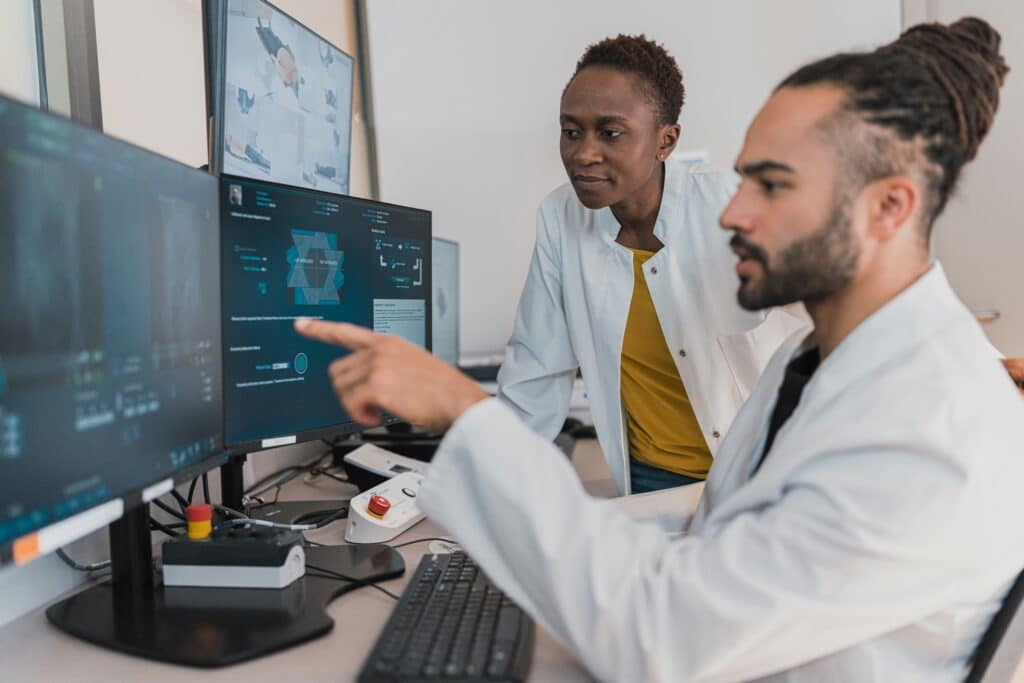The medical environment is high-pressure and regularly daunting for visitors, patients, and even staff. From navigating baffling buildings to dealing with waits, effective communication plays a significant role in providing an improved patient experience. Hospital digital signage can make a difference and create a more informed, structured environment.
With modern, screen-based communications, hospitals and clinics are transforming how they spread information, guide people, and aid staff. The following is an explanation of the most impactful applications of healthcare digital signage.
Patient Check-In Screens
One of the greatest aspects of this healthcare institution trend is the implementation of automated self-service check-in kiosks and digital signage at the front desk.
In the past, patients would stand in line to meet a receptionist, causing queues and delays. Hospital digital signage makes check-in faster and more efficient. Patients can check in on interactive screens by inputting their details, verifying appointments, or updating personal information.
This method has several advantages:
- Queues minimised: Speeds patient flow and maintains waiting areas less crowded.
- Increased privacy: Patients can discreetly check in without sharing personal information out loud at a busy counter.
- Greater accuracy: Patients enter information directly, reducing the potential for admin errors.
Check-in screens can also be utilised to deliver important messaging, such as flu jab reminders or instructions to specialist clinics. It’s an easy addition for most hospitals that optimises efficiency and the patient experience immediately.
Waiting Room Engagement
The waiting room experience can be stressful. In this situation, healthcare digital signage is a powerful tool in turning downtime into a positive, informative experience.
Hospitals and clinics are using screens in waiting rooms to:
- Provide real-time information: Keeping patients informed about estimated wait times removes ambiguity.
- Promote health advice: Training videos, seasonal campaigns, and wellbeing tips allow patients to leave more informed.
- Entertain: Digital dashboards that show news or information can keep waiting patients occupied during their wait.
- Highlight hospital services: From physio to maternity classes, digital signage offers an easy way to market wider healthcare provision.
For children’s wards, digital displays can include interactive games or bright animations to make a more hospitable environment for children and families. The result is a less stressful and more engaging environment that boosts patient satisfaction.

Staff Communications
Hospital digital signage not only impacts patients; staff members also benefit. In high-stress healthcare environments, timely communication is all-important.
Staff area digital signage helps keep teams connected by:
- Publishing shift rota and updates in real-time.
- Sharing key information, for instance, emergency procedures or infection control guidelines.
- Broadcasting hospital announcements quickly across departments.
- Notifying staff of achievements and successes.
Compared to emails that may go unseen, screens placed in staff zones, nurse stations, or corridors guarantee vital information gets seen by those at the point of need. The display makes communication more successful, reduces miscommunication, and ultimately allows staff to provide improved care.
Wayfinding in Medical Facilities
Hospitals are large, multi-campus buildings with intricate layouts. For patients and visitors, finding the right ward, department, or specialist clinic can be a confusing and stressful experience. Scheduling content is where healthcare digital signage shines. Wayfinding screens and interactive maps are the norm in hospital lobbies and corridors, helping people navigate easily.
Benefits of digital signage in healthcare spaces include:
- Interactive maps: Patients and visitors can search for clinics, departments, or even doctors and see step-by-step directions.
- Accessible routes: Digital wayfinding can utilise lifts, ramps, or wheelchair-friendly routes to provide greater accessibility.
- Dynamic updates: If a ward relocates or the development of buildings changes a route, it can be updated all at once without needing to replace paper maps.
- Multi-language support: Certain hospitals are multi-language, and electronic signage allows for rapid switching of languages to improve accessibility.
Easy wayfinding saves staff time, which may be wasted on giving directions. It’s a reasonable investment that improves efficiency across the entire building.
Final Thoughts
As hospitals and clinics continue to evolve to accommodate growing patient loads and complicated operational challenges, hospital digital signage is moving beyond the realm of mere technological advancement. It’s becoming an integral part of how healthcare organisations are communicating more effectively, reducing stress, and delivering more efficient care.
From smooth self-service check-ins to convenient navigation and employee notifications, healthcare digital signage makes everyone feel more engaged and more productive. By using these solutions, hospitals are not only modernising, they’re improving the patient and staff experience in real, measurable ways. Contact us to discover more.
